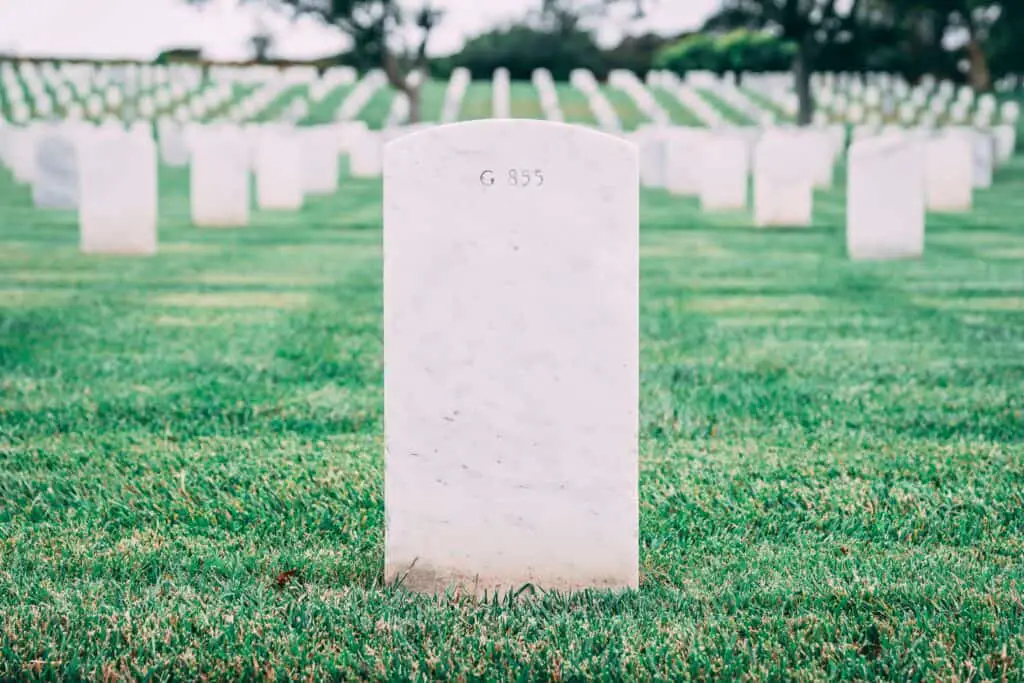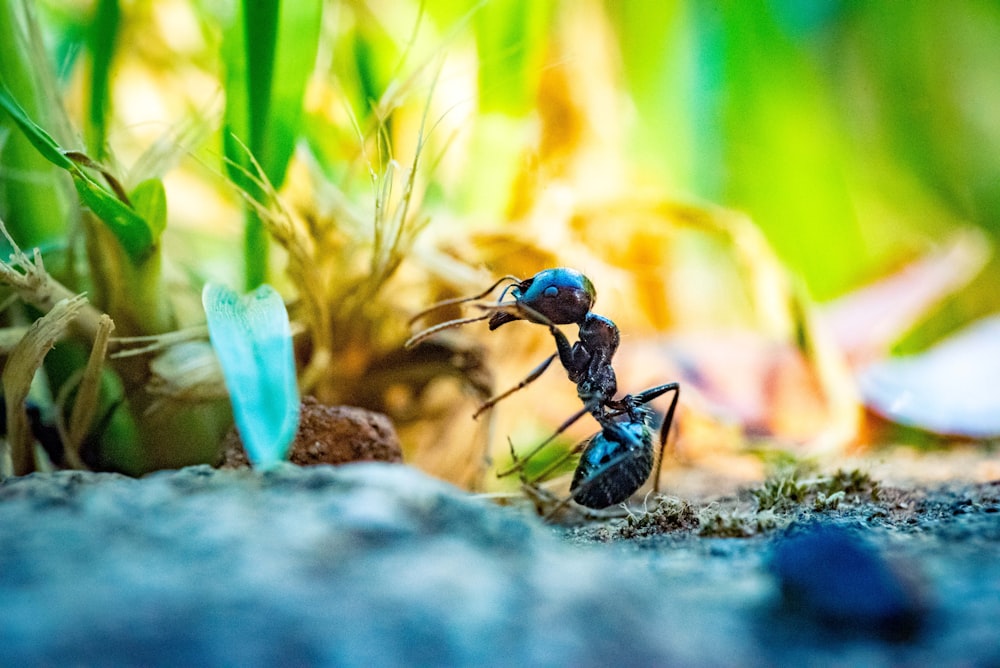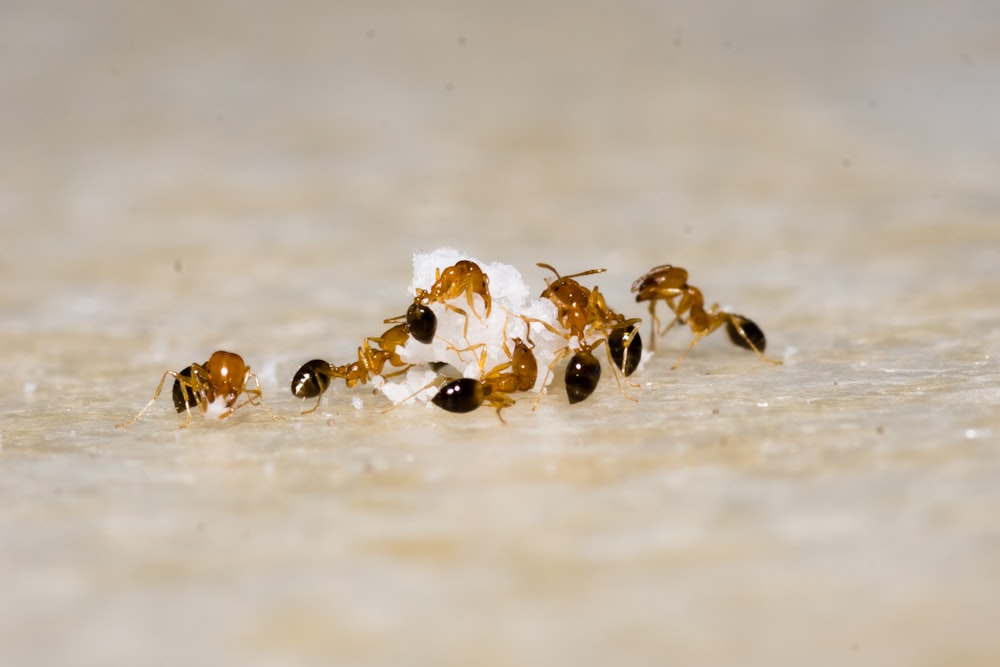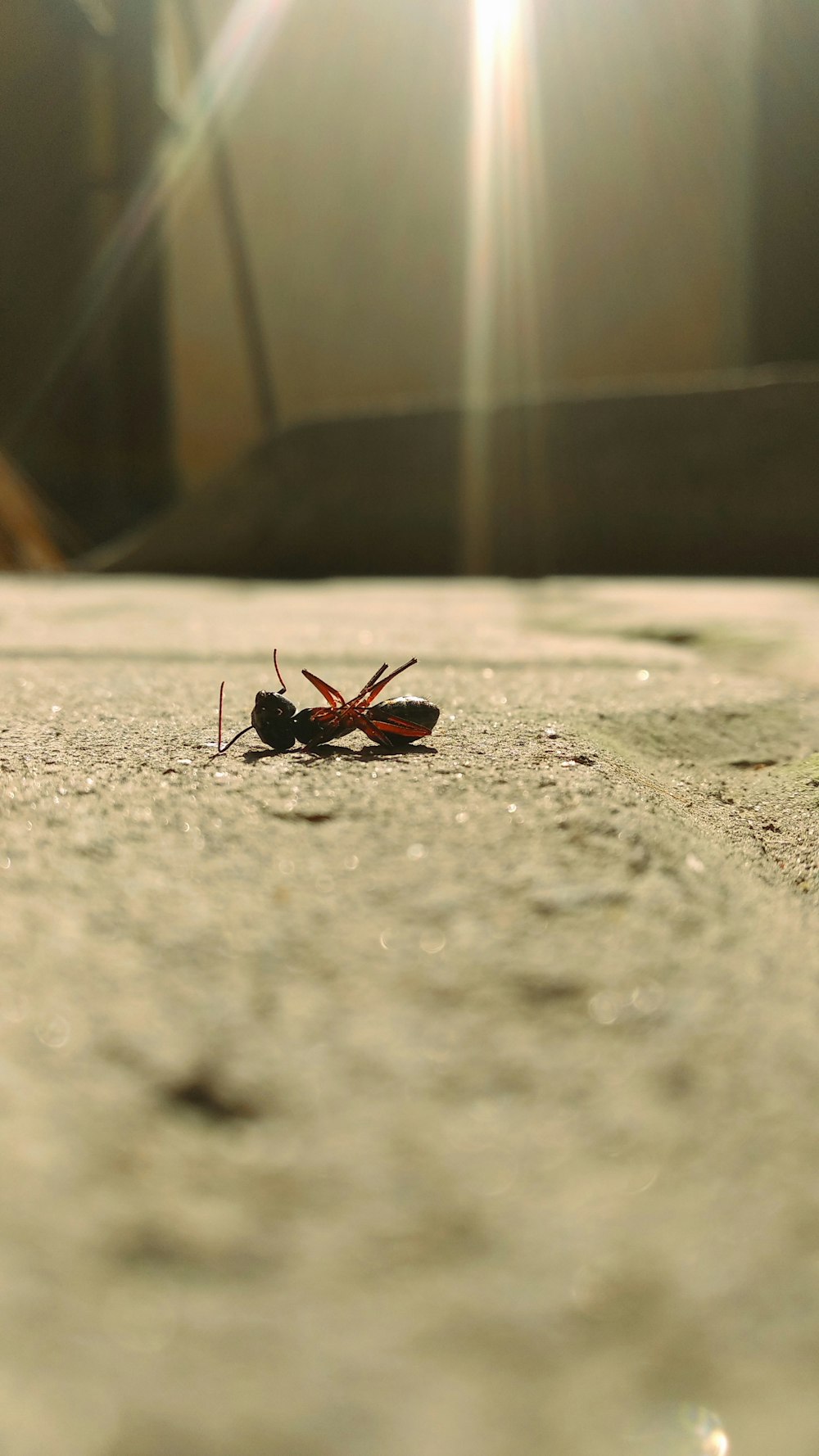When the climate is desirable for their nuptial flight, ants will take flight to try to find a mate.
This normally happens in the spring and early summer.
Many individuals don’t realize that the tiny ants they frequently see carrying their leftovers away are female.
Worker ants are females who gather food, feed the queen, and prepare it for reproduction and mating.
Where are the males?
Why Do Male Ants Die After Mating?
After mating, male ants die from stress-related exhaustion. Also, their reproductive organs can separate and enter the queen’s genital chamber, leading to death. Due to the male ant’s poor sperm production and capacity, and spermatogenesis ceasing when a sperm cell reaches the late pupa stage, they cannot mate again and are highly useless to the colony.
Sperm production is limited
When male ants reach the late pupa stage, they cannot produce more sperm
Since there is no more sperm being produced by that male, the colony does not want to waste food and nutrition on them.
If male ants were able to produce an unlimited amount of sperm to allow the queen to generate many eggs, the male ants would be able to stay
Given the high expense of producing sperm cells, nutrition impacts sperm quantity and viability. Meaning male ants actually suck up a lot of the vital nutrients within the colony.
Sperm production is limited in a male ant as it needs lots of resources like protein.
Sometimes, colonies cannot get their hands on adequate amounts of proteins and other resources vital for forming sperms.
Sadly, these male insects (trying to survive) continue to feed on the resources that ants collect after mating.
The result is that they are driven from their nests by all of the workers, and the colony no longer finds them helpful; eventually, these isolated males die.
Less Attention and Concern From the Colony
Once they have finished transporting sperm to the mother, worker ants don’t care about them anymore.
The male ants cannot get enough food and nourishment, unlike queen ants.
Besides, even before mating, they receive less nutrition than the queen.
However, if worker ants do not attend to their dietary requirements and, as a result, leave them little to no food, they will slowly die.
The difference in the lifespan between male and female ants is due to the different gene makeup and the nutrition that they receive.
Mating for Life
The male partners die after mating since the queen requires them only once in her life.
They survive just as long as the queen needs them to, as she must mate with the male flying creature.
Before using them to fertilize the eggs, the queen might store the sperm for an extended period.
As a result, the sperms stay active for several years and can still fertilize the eggs.
Sadly, this means the queen does not require a constant supply of male partners to populate the colony.
After she has received sperm from another male, that male ant and others are all now useless to the colony.
Also, male ants are easier to produce. This means dying does not have a drastic effect on the colony, as the queen can produce male ants faster.
The queen avoids repeated mating and stores sperm for future fertilization.
Reproductive Organ Damage
Male ants mate aggressively with a large-sized healthy queen; their genital organs are usually heavily damaged due to the size differences.
As a result, their genitalia explodes and enter the partner’s chamber.
Since they are unable to withstand the stress, many die quickly.
As a result, their sexual organs lose viability and these males cannot re-mate.
Most species of ants are aware that they will die after this process, it is referred to as “suicidal mating.”
What’s even more interesting, is even though male ants know they will die if they mate, they still actively pursue mating with the queen ant.
Talk about taking one for the team!
Insufficient energy
These male ants are tinier and have less energy than the queen.
Consequently, after mating, they are drained and need adequate nutrition to remain alive.
As a result, they shed their wings and begin eating them to acquire nutrients and feel energized.
They can’t live on wings for more than a week, so they need food.
Remember, after mating – the colony leaves them to fend for themselves.
Sadly, these tiny weak and hungry ants aren’t able to survive much longer.
Swift Reproduction
Male ants are born from unfertilized eggs, which are generated in endless quantities by both the worker ants (sometimes) and the queen (most of the time).
Mating is required to produce female offspring since they need the genetic makeup of their parents. Since females have the genetic makeup to produce male offspring, egg fertilization is unnecessary.
Queen ants must produce new offspring (worker ants) to ensure the continuity of generations.
They also perform critical tasks and bring the insects together.
They must provide fresh worker ants to gather food and feed the queen and larvae to maintain the colony’s viability.
However, unlike female worker ants and the queen, these insects have no specific duties.
Therefore, they are not active in gathering food or ensuring the colony’s survival.
So, the male ants die after mating since they don’t have anything else to do and are a nuisance to the colony.
Is it possible for a Queen to Re-Mate with Male Ants?
Ants go through a metamorphosis from egg to larva to pupa to adult.
Every ant colony starts with and revolves around the queen, whose only function is reproduction.
The queen never mates again, even though she may copulate with multiple men during her brief mating phase.
The queen can store viable sperm for many years, and she can preserve things like the sperm of a long-dead male ant.
She has a special pocket inside her body where she hides the sperms to protect them.
She opens a valve that enables sperm to enter her reproductive canal to fertilize the eggs; they remain immobile in the internal pouch, known as the spermatheca, located near the tip of her abdomen. (See More)
She does not like to mate often because males can transfer all of their sperm at once, which is sufficient for reproduction.
A single flight can collect enough sperm to last a lifetime (over 30+ years).
After mating, how long do male ants live?
They have a very short lifespan after mating and pass away within a few days, and a new one takes their place when they mature from larvae to adults.
Because they all only have DNA from the female ants, male ants in a colony have identical genetic makeup.
Male ants can go on for nearly 4 to 8 days without food before running out of energy.
However, as we know many male ants suffer reproductive organ damage while mating, which causes them to pass away.
They deposit all of their sperm inside the female vaginal cavity, becoming sperm-free.
Other Articles On Common Ant Questions
When it comes to ants, there are a ton of different questions.
We have some posts that answer some of the common and most well-known ant questions.
Those articles are in this list here:
After Mating, Do Ants Remove Their wings?
Winged virgin queens search high in the air for capable males who can mate with them.
Both partners take part in the nuptial flight and land after transferring the sperm.
The virgin queens mate with male ants (basically flying sperm).
They immediately detach their wings from their body as they return because they don’t have a colony to feed them.
The female must establish a new colony, so it utilizes the wings to get food that will help it have young.
Additionally, the muscles of the wings are a rich supply of nutrients that aid in the growth of a new colony.
The male partner removes his wings from his body, spends some time in solitary, and then passes away.
The male drones receive death, and the male ant’s life cycle ends here.
Is it true that all male ants die after mating?
By raising fresh young, queen ants must ensure the continuity of generations.
Additionally, they must carry out essential duties and promote insect coordination.
They must also keep the colony alive by giving it young worker ants, who gather food and feed the queen and larvae.
However, unlike the queen and female worker ants, male ants do not have specialized responsibilities.
Thus, they have no part in gathering food or ensuring the colony’s survival.
Since they have no other duties besides mating, they die shortly after.
Therefore, these ants die after mating since they cannot continue living in the colony, and their reproductive organs are damaged during the mating ritual.
Other Mating Information about Male Ants, Queen Ants, and Worker Ants
Most Ants you Encounter are Female Ants.
There is a hierarchy of responsibility among ants. The colony’s founder, the queen ant, is responsible for egg production.
The fact that the worker ants are all female ensures the colony’s seamless operation. Their duties include:
- Taking care of the queen ant and also the young, foraging.
- Keeping the peace during disputes within the colony.
- Disposing of garbage.
Female workers are unlikely to have fertilized children (can produce males).
Most eggs grow into workers; however, once the colony is prepared, the queen creates other reproductive female ants, which will later establish their colonies.
Whether a female ant becomes a worker or reproductive depends heavily on the early diet.
Any female larva has the potential to become the queen. The larva that is fed a diet higher in protein becomes reproductive. Since they take all the protein, less protein is consumed to be consumed by the others. This causes them to become workers.
Male ants are essentially just flying sperm.
The number of genome copies an ant has is determined by its sex, unlike humans with X and Y chromosomes.
Since male ants are created from unfertilized eggs, they do not inherit a father’s genome.
This implies that although male ants have grandfathers and can have grandsons, they do not have fathers and cannot produce sons.
In contrast, female ants grow from fertilized eggs and have two copies of their genome—one from their mother and one from their father.
After mating, Queens Go Weeks Without Eating.
The flying virgin queens and males leave their nests searching for mates when the weather is warm and muggy.
This behavior is typical on “flying ant day.”
In some queens, mating occurs on the wing, frequently hundreds of meters in the air.
Queens then fall to the ground and shed their wings, whereas males pass away shortly after.
Mated queens pick a location for their nest and dig down into the moist earth.
The queen ants won’t eat once they’re underground, and are in a full-reproductive mode for weeks or until they’ve given birth to their workers.
The first batch of eggs they lay are fertilized using sperm they had retained from their nuptial flight.
They do not move much and use energy from their fat reserves and unused flight muscles.
The same supply of sperm obtained from the (long-dead) males enables a queen ant to carry on producing fertilized eggs for the rest of her life.
Queen ants do not mate again.
Conclusion & Final Thoughts On Male Ant Mating and Death.
Male ants behave like flying sperm.
Since they only have one copy of their genome, each sperm is genetically identical.
Their work is also short-lived because they pass away shortly after mating; however, their sperm may survive for many years.
In essence, reproduction is all they do.
Male ants make the ultimate sacrifice for the ant species. (See More)
Ants benefit ecosystems by carrying out different roles throughout the world (mostly other insect control).
So next time you encounter an ant species, acknowledge its existence and how important it can be to the local ecosystem.






